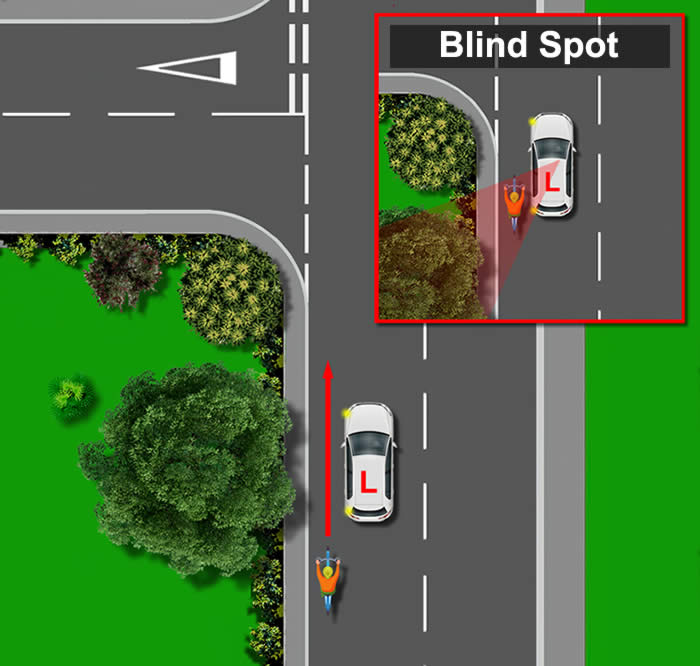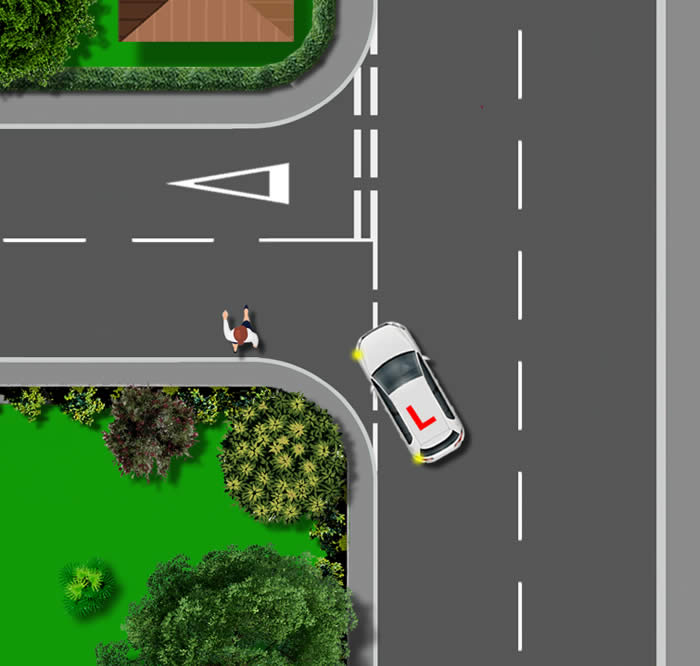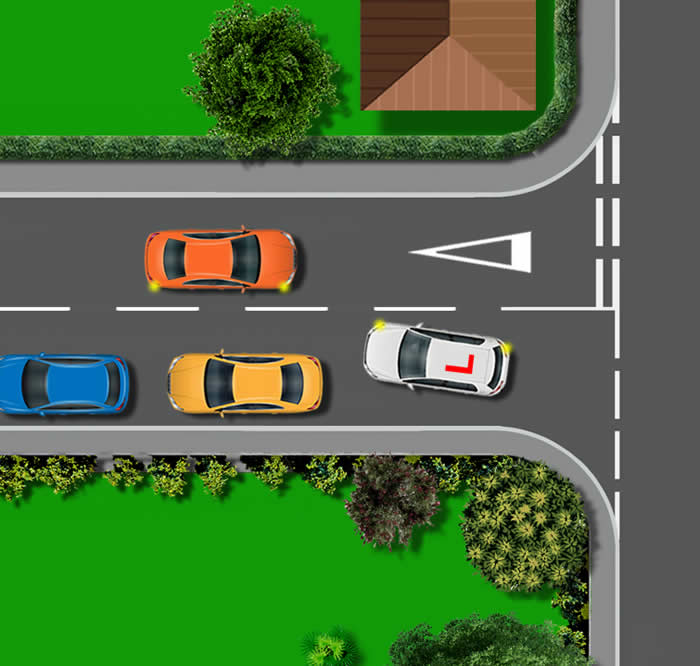Before making a left turn into a side road, you’ll first need to be aware and prepared for what hazards you may encounter. In this tutorial, we’ll explain what hazards you should look for on the approach to the left turn, plus the hazards you may encounter during the turn and just after the turn.
Hazards on the Approach to a Left turn
In busy towns and cities you’ll often find lots of cyclists. As you approach a left turn, you’ll need check that just prior to turning left, that the left side of your car is clear from cyclists.

This hazard may involve a situation where you passed a cyclist earlier on, traffic slows and the cyclist makes progress through the vehicles. The cyclist then catches up with your car.
Don’t assume that cyclists will see your left signal, slow down and wait for you to make the turn. Many will, but some may not, so be prepared to stop and allow the cyclist to pass through if necessary. In this situation, checking your mirrors may not be enough.
When driving in an area with cyclists and making a left turn, first run through the mirrors, signal, position, speed and look procedure (MSPSL), but just before making the turn, check your left blind spot to ensure the area is clear of cyclists.
Hazards You May Encounter During the Turn
Now that you can see that it’s safe to turn into the left side road, you’ll need to be on the lookout for other hazards. A very common place where pedestrians cross the road is at junctions.

As of January 2022, the Highway Code has been updated to give vulnerable road users greater protection. The Highway Code states that drivers at a junction you should give way to pedestrians crossing, or waiting to cross a road into which or from which you are turning.
If a pedestrian is already committed to crossing the road, you must stop and give way to allow the pedestrian to cross. If a pedestrian is waiting to cross, you should stop and allow the pedestrian right of way if it’s safe to do so. See pedestrians crossing at junctions for further information.
Hazards You May Encounter After the Turn
We often see cars parked at the side of the road, particularly as we come off a major road into a minor road. If the left turn is closed and you can’t see the parked cars until you’ve made the turn, you’ll need to be prepared (see what speed should you make a left turn for more information on open and closed left turns).

If the road is not wide enough to accommodate parked cars, your car and an oncoming car, you’ll need to be prepared to give way if the parked cars are on your side of the road. To let other drivers know your intentions, you may wish to apply a right signal.
Drivers shouldn’t park their car any closer that 10 metres to the junction, but you should be prepared for any situation and that includes drivers that may park inconsiderately and far closer to the junction than they should.
Also be aware that cars may be parked on the opposite side of the road rather than your side. Generally this means that you have priority, but if a driver has already committed to passing the parked cars, you may need to give way to allow the driver through, before proceeding ahead.